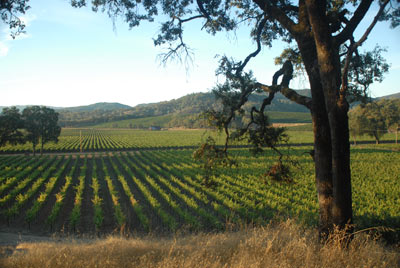Fiction: "Potter Valley doesn't need Eel River water and they have never tried to look for other water sources. Potter Valley could just use their natural ground water pool."
 Until the Potter Valley Project provided water in the summer, Potter Valley was dry farmed. This severely limited both the type and production of crops. It also limited the number of livestock that could be raised. For agriculture, the availability of water has been, and still is, the key to success and the only way to maintain a competitive edge. With the Potter Valley Project water, agriculture has flourished in Potter Valley, and all along the Russian River corridor.
Until the Potter Valley Project provided water in the summer, Potter Valley was dry farmed. This severely limited both the type and production of crops. It also limited the number of livestock that could be raised. For agriculture, the availability of water has been, and still is, the key to success and the only way to maintain a competitive edge. With the Potter Valley Project water, agriculture has flourished in Potter Valley, and all along the Russian River corridor.
In the 1950's, PVID tried to find an alternative source of water because they were concerned with the cost of the water they bought under their contract with PG&E and they did not want to be so dependent upon the Potter Valley Project. In 1954, PVID hired Willits Soil Conservation District to survey the valley and find locations for one or more storage reservoirs. The results of the study determined that there were six potential sites. However, none of these sites could store more than 3,700 acre feet of water and the reliability of sufficient runoff to fill these small reservoirs year to year was in doubt. The six small reservoirs would have potentially held 14,400 acre feet of water and cost, on the average, $81.00 per acre foot to build. That would have been $1,166,000.00 in 1954. The concept was abandoned.
Dr. Robert Curry, hired by the Friends of the Eel River stated in his report to FERC "In Support of the Friends of the Eel River Comments on the DEIS for the Proposed Reoperation of FERC Project 77-110" (April 26, 1999) that Potter Valley should just use their ground water pool and there would be no need for the Potter Valley Project water. This is untrue; there are no significant ground water pools in Potter Valley. In 1985, Ralph Scott, a geologist with the California Department of Water Resources, stated at the Eel Russian River Commission that Potter Valley has a fractured aquifer, (See also 2004 DWR Ground Water Bulletin #118) Potter Valley is described geologically as a "pull apart valley" which is formed by a fault. When this occurs no significant ground water pools can form because of the tectonically ruptured rock base.
 Until the Potter Valley Project provided water in the summer, Potter Valley was dry farmed. This severely limited both the type and production of crops. It also limited the number of livestock that could be raised. For agriculture, the availability of water has been, and still is, the key to success and the only way to maintain a competitive edge. With the Potter Valley Project water, agriculture has flourished in Potter Valley, and all along the Russian River corridor.
Until the Potter Valley Project provided water in the summer, Potter Valley was dry farmed. This severely limited both the type and production of crops. It also limited the number of livestock that could be raised. For agriculture, the availability of water has been, and still is, the key to success and the only way to maintain a competitive edge. With the Potter Valley Project water, agriculture has flourished in Potter Valley, and all along the Russian River corridor.